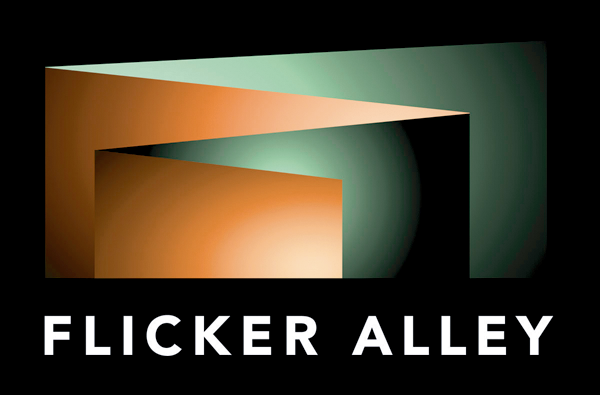Flicker Alley’s latest release, The House of Mystery (La Maison du mystère), stars Ivan Mosjoukine, the silent era leading man known in Europe as the “Russian Valentino.” In the following exclusive essay, Vika Paranyuk, Soviet film historian and Yale graduate student, sheds light on Mosjoukine’s multifaceted talent, his restrained approach to conveying emotion on screen, and his high hopes for a U.S. crossover.
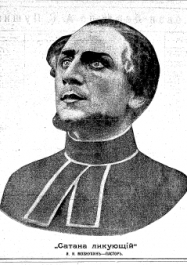 Ivan Mosjoukine’s sparkling presence on the movie screen quickly caught on with the French public and critics. By the time the Russian émigré studio Films Albatros released the serial La Maison du Mystère in 1922-23, Mosjoukine was once again becoming a bright, seemingly inextinguishable star. “Once again,” because in tsarist Russia he had been known as the “king of the screen,” gracing many productions first at the Khanzhonkov Studio and then at Ermoliev’s, most notably and successfully as the unlucky gambler Gherman in The Queen of Spades (1916), the tormented pastor as well as the possessed pianist in Satan Triumphant (1917), and the imperial cadet turned wandering sage in Father Sergius (1918). Yakov Protazanov directed all three, marking a distinctly fruitful collaboration between the director and the actor. In France they would make two more films together, L’Angoissante aventure (1920) and Justice d’abord (1921), before Protazanov’s departure for Germany in 1922 and Soviet Russia soon after.
Ivan Mosjoukine’s sparkling presence on the movie screen quickly caught on with the French public and critics. By the time the Russian émigré studio Films Albatros released the serial La Maison du Mystère in 1922-23, Mosjoukine was once again becoming a bright, seemingly inextinguishable star. “Once again,” because in tsarist Russia he had been known as the “king of the screen,” gracing many productions first at the Khanzhonkov Studio and then at Ermoliev’s, most notably and successfully as the unlucky gambler Gherman in The Queen of Spades (1916), the tormented pastor as well as the possessed pianist in Satan Triumphant (1917), and the imperial cadet turned wandering sage in Father Sergius (1918). Yakov Protazanov directed all three, marking a distinctly fruitful collaboration between the director and the actor. In France they would make two more films together, L’Angoissante aventure (1920) and Justice d’abord (1921), before Protazanov’s departure for Germany in 1922 and Soviet Russia soon after.
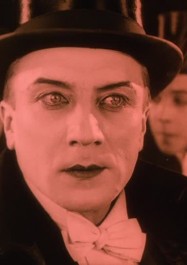 But Mosjoukine, of course, was much more than an actor. His expansive persona could accommodate many facets of his equally expansive talent. He often shared writing credit, penned a number of scenarios himself, and even directed a couple of films under the aegis of Albatros, a studio in Montreuil that he helped establish with his compatriots. The Burning Crucible (Le Brasier ardent, 1923), his most daring and playful formal experiment, could come across as a conceit in supreme self-importance and indulgence – he wrote an original script, directed the film, and gave himself several roles in it. But Mosjoukine’s exuberant inventiveness is so full of humor, and his delight in the possibilities of cinema so evident that any hint of naked self-promotion flies out the window. Although a commercial failure, The Burning Crucible put him squarely in the midst of the French cinematic avant-garde. After the film’s engagement at the Marivaux Theater, some sequences were screened at the famous Vieux Colombier as part of a by-invitation-only program under “Symbolist Selections,” an event organized by Riciotto Canudo and his ciné-club. There Le Brasier ardent was in such illustrious company as Abel Gance’s groundbreaking La Roue (1923) and Jean Epstein’s controversial Coeur fidèle (1923). A highly regarded thinker about cinema, Canudo found Mosjoukine’s film as astonishing as Diaghilev’s first ballets.
But Mosjoukine, of course, was much more than an actor. His expansive persona could accommodate many facets of his equally expansive talent. He often shared writing credit, penned a number of scenarios himself, and even directed a couple of films under the aegis of Albatros, a studio in Montreuil that he helped establish with his compatriots. The Burning Crucible (Le Brasier ardent, 1923), his most daring and playful formal experiment, could come across as a conceit in supreme self-importance and indulgence – he wrote an original script, directed the film, and gave himself several roles in it. But Mosjoukine’s exuberant inventiveness is so full of humor, and his delight in the possibilities of cinema so evident that any hint of naked self-promotion flies out the window. Although a commercial failure, The Burning Crucible put him squarely in the midst of the French cinematic avant-garde. After the film’s engagement at the Marivaux Theater, some sequences were screened at the famous Vieux Colombier as part of a by-invitation-only program under “Symbolist Selections,” an event organized by Riciotto Canudo and his ciné-club. There Le Brasier ardent was in such illustrious company as Abel Gance’s groundbreaking La Roue (1923) and Jean Epstein’s controversial Coeur fidèle (1923). A highly regarded thinker about cinema, Canudo found Mosjoukine’s film as astonishing as Diaghilev’s first ballets.
Mosjoukine’s protean talent and charisma still shine from the screen. I challenge you to focus on another character while he is in the frame – his presence is magnetic. In a 1923 Cinéa-ciné-pour-tous article dedicated to the Russian star, an ecstatic critic writes: “On his proud face, a slight shudder passes, savage lightening flickers in his light eyes – that’s all…already the entire theater is transfixed by his imperious and tormented mask…What is the secret of this incomparable spell? Mosjoukine just revealed his soul on his face! A subtle alchemist of passion and pain, transformer of all beauty of the soul, Ivan the Superb…expresses the Inexpressible.” Despite the hyperbolic, poetic, and somewhat mystical language, which was rather common in film writing of the period, the passage also points to something else. Mosjoukine the actor truly cared about his craft. He began thinking about expressive possibilities of cinema and screen acting versus the stage when he was still in Russia. In 1918, Kinogazeta published his thoughts on the subject. Criticizing the histrionics of his fellow film actors, he writes, “[T]he unarguable advantage, and essence of cinema, is the face, the eyes that express more than language. It has become clear that the actor only needs to think sincerely and eagerly about what he wants to say in front of the camera, and the audience in the theater will understand him.” I left the original emphasis intact because it distills his view on film acting – it is about the face and supreme restrain. Think it (anguish, joy, desire, anything) and the means of cinema – the camera, the shot, the screen – will carry it through to the public. In the same piece, Mosjoukine rues the fact that his colleagues fail to take film acting seriously and understand the profound differences between cinema and theater.
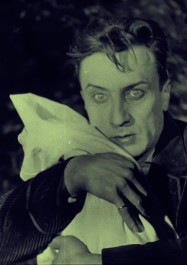 In his adopted country, he continued to explore acting technique and the potential of film in general. The French press frequently solicited his view on these matters. In a conversation with Cinéa’s critic, Mosjoukine discusses what constitutes, in his opinion, the most important objective of the medium. Cinema “cannot be satisfied with a dramatic narrative alone, no matter how well it might be developed…the public demands from cinema to be renewed as often as possible,” the émigré star offers in connection with the release of The Burning Crucible. At the time, he perceived his own renewal as a performer by following the acting styles of his idols, Charlie Chaplin and Douglas Fairbanks. Above all, he prized their athleticism, mastery of gesture and movement, and dismissal of heavy, psychological characterization. Their acting had no retrograde markings of dramatic theater. It was meant for the big screen. Their secret lied in knowing how to exploit to the utmost the unique features of cinema and how to train themselves for it. “Douglas is one of these strong modern personalities that lighten up everything around them and that the cinema revealed to the crowds not as actors in certain parts, but as real people caught unawares by the camera, the way we sometimes do in everyday life,” Mosjoukine observes. He, too, wanted to be caught in a moment, flipping upside down in a headstand in The Burning Crucible or letting a warm connection between him and Michel Simon in Marcel L’Herbier’s The Late Mathias Pascal (1926) reveal itself through comedic gesture. Fairbanks and Chaplin, and by extension Hollywood, were a beacon of cinema’s future.
In his adopted country, he continued to explore acting technique and the potential of film in general. The French press frequently solicited his view on these matters. In a conversation with Cinéa’s critic, Mosjoukine discusses what constitutes, in his opinion, the most important objective of the medium. Cinema “cannot be satisfied with a dramatic narrative alone, no matter how well it might be developed…the public demands from cinema to be renewed as often as possible,” the émigré star offers in connection with the release of The Burning Crucible. At the time, he perceived his own renewal as a performer by following the acting styles of his idols, Charlie Chaplin and Douglas Fairbanks. Above all, he prized their athleticism, mastery of gesture and movement, and dismissal of heavy, psychological characterization. Their acting had no retrograde markings of dramatic theater. It was meant for the big screen. Their secret lied in knowing how to exploit to the utmost the unique features of cinema and how to train themselves for it. “Douglas is one of these strong modern personalities that lighten up everything around them and that the cinema revealed to the crowds not as actors in certain parts, but as real people caught unawares by the camera, the way we sometimes do in everyday life,” Mosjoukine observes. He, too, wanted to be caught in a moment, flipping upside down in a headstand in The Burning Crucible or letting a warm connection between him and Michel Simon in Marcel L’Herbier’s The Late Mathias Pascal (1926) reveal itself through comedic gesture. Fairbanks and Chaplin, and by extension Hollywood, were a beacon of cinema’s future.
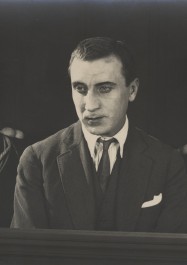 Mosjoukine led a life in keeping with his movie star standing. His expensive habits knew no qualms about conspicuous consumption and pleasure. An immaculate dresser, he preferred the latest in Paris fashion. He received a healthy amount of attention in the pages of magazines for women such as La femme de France and Les Dimanches de la femme, where, among other things, his physique was discussed, he was promised eternal love, and named the best actor, whose visage, while economic in expression, managed to divulge every little emotion. In his memoir that came out in 1926 – there is some doubt as to whose hand really wrote it – Mosjoukine mentions having to grow a beard for the title role in Michel Strogoff (1927), a detail that his lady admirers apparently discussed endlessly – “Some said they preferred me with this superb Cossack ornament; some thought the opposite.” In her fervent love letters to Mosjoukine, Kiki of Montparnasse, the legendary model and muse of the Parisian avant-garde, whom the Russian filmmaker could have met at the popular nightclub Jockey, conflates him with his roles: “Dear Kean,” “My beautiful Lion,” “The one I love is called Kean, but don’t tell anyone about it.” He had a voracious love for automobiles – he owned a Chrysler and a couple of Citroëns. Once he even suggested to be interviewed while driving his Chrysler around Paris.
Mosjoukine led a life in keeping with his movie star standing. His expensive habits knew no qualms about conspicuous consumption and pleasure. An immaculate dresser, he preferred the latest in Paris fashion. He received a healthy amount of attention in the pages of magazines for women such as La femme de France and Les Dimanches de la femme, where, among other things, his physique was discussed, he was promised eternal love, and named the best actor, whose visage, while economic in expression, managed to divulge every little emotion. In his memoir that came out in 1926 – there is some doubt as to whose hand really wrote it – Mosjoukine mentions having to grow a beard for the title role in Michel Strogoff (1927), a detail that his lady admirers apparently discussed endlessly – “Some said they preferred me with this superb Cossack ornament; some thought the opposite.” In her fervent love letters to Mosjoukine, Kiki of Montparnasse, the legendary model and muse of the Parisian avant-garde, whom the Russian filmmaker could have met at the popular nightclub Jockey, conflates him with his roles: “Dear Kean,” “My beautiful Lion,” “The one I love is called Kean, but don’t tell anyone about it.” He had a voracious love for automobiles – he owned a Chrysler and a couple of Citroëns. Once he even suggested to be interviewed while driving his Chrysler around Paris.
As Mosjoukine navigated Paris streets in his slick American car, the journalist pressed him with questions about his imminent departure for Hollywood, where the émigré star envisioned his future, within a stone’s throw of Chaplin and Fairbanks. A lucrative contract with Universal Pictures in hand, he anticipated starring in “straightforward life dramas and cheerful comedies, of which the Americans are such masters.” He was expected to join the studio in August 1926 to begin work on The Man Who Laughs the following month. However, the shooting of Alexander Volkoff’s Casanova delayed him in Europe. Mosjoukine boarded the ocean liner Berengaria on a November evening of 1926. His hopes were high.
A graduate student in the joint program in Film and Media Studies & Slavic Languages and Literatures at Yale University, Vika Paranyuk’s main research interests focus on Russian and Soviet visual culture of the late 19th and early 20th centuries, particularly on the interaction between painting and cinema and realist aesthetics; Cold War cultural policy; and 1950s European cinema. Her other interests involve Russian émigré filmmakers in interwar Europe and women’s contribution to silent film. In December 2013, Vika co-curated a series Film Albatros at the Museum of Modern Art in New York.
You can see the “King of the Screen” Ivan Mosjoukine shine in the 10-episode Films Albatros serial The House of Mystery, now available in a 3-disc DVD collection, and in Marcel L’Herbier’s The Late Mathias Pascal, now on Blu-ray.
For more exclusive essays like this one, plus film preservation news and special discounts, sign up for the Flicker Alley Newsletter.
Bibliography
Abel, Richard. French Cinema: The First Wave, 1915-1929. Princeton, NJ: Princeton University Press, 1984.
Arroy, Jean. “Ivan.” Cinéa-ciné-pour-tous 1 Dec. 1924: 15-17.
Borger, Lenny. “From Moscow to Montreuil: the Russian Emigrés in Paris 1920-1929.” Griffithiana 35-36 (Oct. 1989): 28-39.
“Cinéa interroge Ivan Mosjoukine.” Cinéa-ciné-pour-tous 15 June 1923: 10-15.
Iangirov, Rashit. “Raby nemogo”: ocherki istoricheskogo byta russkikh kinematografistov aa rubezhom, 1920-1930-e gody. Moskva: Biblioteka-fond “Russkoe zarubezh’e”: Russkiĭ put’, 2007.
Mosjoukine Ivan. “Moi Mysli.” Kinogazeta, February, special number (1918): 3.
—. When I was Michel Strogoff. United States: s.n., 1927
Nusinova, Natal’ia. Kogda my v Rossiiu vernemsia…: russkoe kinematograficheskoe zarubezh’e, 1918-1939. Moskva: NIIK, Ėizenshteinovskii tsentr issledovanii kinokul’tury, 2003.
“La Ruche.” La femme de France 10 Aug. 1924: 3.
“La Ruche.” La femme de France 15 June 1927: 5.
“La Ruche.” La femme de France 4 Sept. 1927: 7.
“Universal to Distribute ‘Michael Strogoff’ in the US.” Universal Weekly: np. May 8, 1926.
